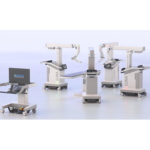The manufacturing industry reported nearly 850,000 injuries in 2022. That number makes up 15% of all nonfatal injuries/illnesses among private sector employees. Workplace injuries can have a domino effect on companies, leading to added workers compensation and care costs, manufacturing slowdowns and diminished productivity. Organizations that prioritize worker safety not only reduce these adverse effects, they benefit from improved employee retention and recruitment.
Top 5 Safety Hazards in Medical Device Manufacturing
Several health and safety risks exist in the medical device manufacturing field, but some are more prevalent than others. The following are five of the most common risks for workers and employers to be aware of.
Chemical Exposure. A variety of chemicals are used to produce medical devices, many of which are hazardous when inhaled and cause injuries if they come in contact with the skin.
Noise and Mechanical Hazards. Many different machines are used in medical device manufacturing processes, including CNC machines, sheet metal fabricators, injection molding machines and printed circuit board assemblies. Employees operating these machines run the risk of coming in contact with moving parts and experiencing crushing injuries. Many of these machines are also very loud when in use. Prolonged exposure to this noise can cause long-term hearing damage, tinnitus (ringing in the ears), cardiovascular problems and increased anxiety.
Electrocution. The use of electrical equipment comes with the risk of electrocution. Electrical injuries can cause burns, internal organ damage, cardiac arrhythmias, respiratory arrest and other long-term health issues.
Biohazard Exposure and Contamination. Biological hazards (biohazards) include exposure to pathogens such as bacteria, molds, yeasts and viruses. If equipment and materials are not sterilized properly, the risk of exposure to these pathogens (and illnesses caused by them) increases, especially among employees who work in enclosed areas and in close proximity to each other.
Ergonomic Hazards. Many manufacturing jobs require workers to stand for extended periods. They may also have to bend over a table or assembly line and perform repetitive motions for hours at a time. These ergonomic hazards can result in chronic back, neck and joint pain. They may also increase workers’ chances of developing arthritis, fibromyalgia, plantar fasciitis and other chronic pain-related conditions.
Strategies to Prevent Occupational Hazards
The first step to avoiding the hazards listed above is awareness. To further protect employees and maintain a safe and productive work environment, medical device manufacturers should also implement the following strategies:
Provide Sufficient Training. All employees should be trained on how the equipment they are using works and how to use it correctly. New employees should receive in-depth training starting on their first day. All employees should also receive ongoing refresher courses to ensure they stay informed and aware of health and safety-related best practices.
Provide Personal Protective Equipment. Employees should have access to personal protective equipment (PPE), including gloves, aprons and/or respirators that reduces their risk of coming in contact with or inhaling harmful chemicals. In addition to having access to this equipment, they should receive training on how to wear it correctly and also be counseled on appropriate footwear and clothing to reduce the risk of injury while operating equipment.
Provide Access to a First Aid Kit. Easy access to a first aid kit—and ensuring that every employee on the floor knows where the kits are stored—allows workers to act immediately in the case of injury. First aid equipment should also include a defibrillator and eye wash stations, if appropriate.
Encourage Regular Breaks. Regular breaks can reduce the risk of ergonomic injuries. Employers should give employees opportunities throughout the day to step away from their work, stretch and relax for a few minutes. They should also encourage employees to take these breaks.
Establish Clear Reporting Procedures. Employees need to know whom to consult if they are injured on the job or are aware of unsafe practices that could cause injuries. A clear reporting procedure and transparent chain of command will ensure that issues get addressed promptly before they can escalate and cause severe damage. OSHA also requires reporting of all workplace injuries.
Employers in the medical device manufacturing space can make significant strides toward reducing on-the-job accidents and injuries by following the guidelines discussed above. Simple changes to policies and procedures can lead to impressive benefits for all employees.







